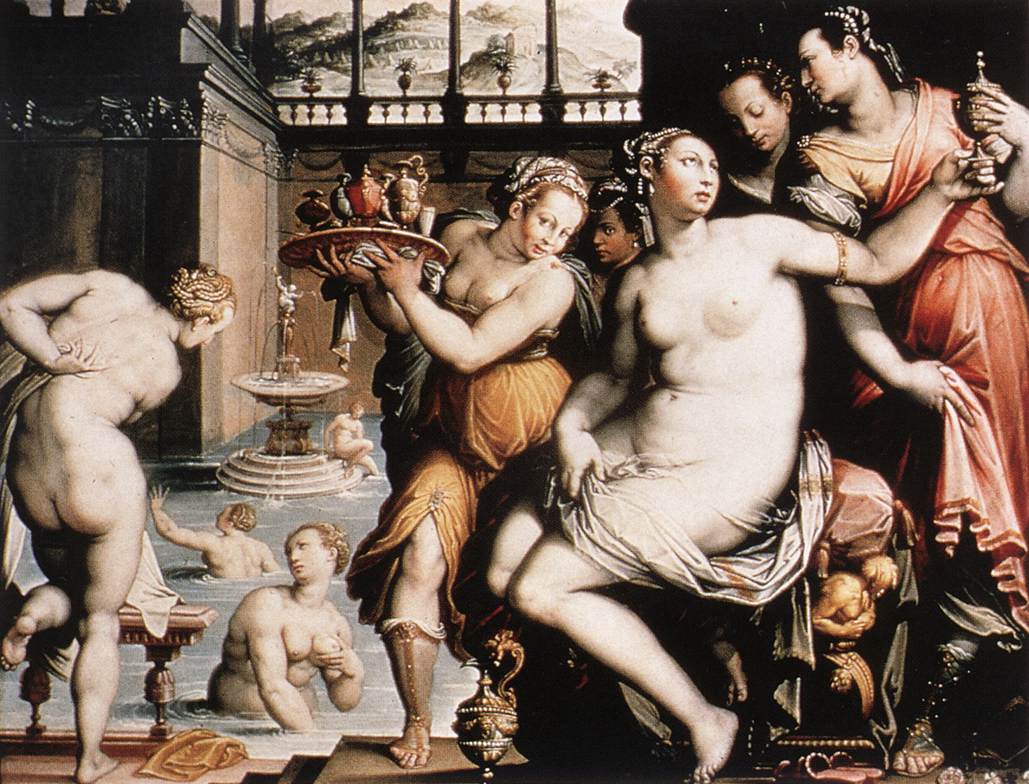Zucchi
Slide 1: Zucchi Bathsheba
_
lshafe (27 January 2004 17:42:09)
The Toilet of Bathsheba
after 1573
Oil on panel, 120 x 144, 7 cm
Galleria Nazionale d’Arte Antica, Rome
Attributed to Giorgio Vasari, this panel was loaned to the Italian embassy in Berlin in 1908. Though the painting was assumed to have been destroyed in the bombardment of Berlin at the end of the Second World War, it survived and was acquired by the Wadsworth Atheneum (Hartford) in 1965. In 1998 the Atheneum returned the painting to the National Gallery at the Palazzo Barberini. The attribution to Zucchi was made in 1925, and the painting was dated to the first years of the 1570 ‘s on the basis of stylistic comparison to other Zucchi paintings of this period. The rich and lively chromatic range, the smooth surfaces, the movemented poses and the sculptural quality of the figures are all comparable to Zucchi ‘s work at the Palazzo Vecchio and at the Palazzo Pitti in Florence. On account of the closeness between the complex pose of the figure to the left and that of a small bronze allegorical figure of Astronomy executed by Giambologna (Vienna, Kunsthistorisches Museum) in 1573, it is possible to set the ‘terminus post quem’at that year.
The toilet of Bathsheba was an Old Testament narrative that enjoyed great popularity during the Renaissance. From the roof of his palace, King David spied the lovely Bathsheba taking her bath….
Slide 2: Zucchi Coral Fishers
_
lshafe (27 January 2004 17:43:16)
The Coral Fishers
1585
Oil on copper, 55 x 45 cm
Galleria Borghese, Rome
The elegant Coral Fishers (also referred to as Allegory of the Discovery of the New World) and the Allegory of the Creation (also in the Galleria Borghese) by Jacopo Zucchi formerly decorated Cardinal Ferdinando ‘s studiolo in the Villa Medici in Rome.
It was probably thanks to the Florentine Jacopo Zucchi, in Rome from the papacy of Gregory XIII (1572-85) and to the taste of his patron Cardinal Ferdinando de’ Medici that paintings designed for small rooms began to be imported. These paintings, which had the same artificiality as the decorative work produced in Giorgio Vasari ‘s workshop in Florence for the Studiolo in the Palazzo Vecchio, were added to the collection being assembled by the cardinal for the Villa Medici in
